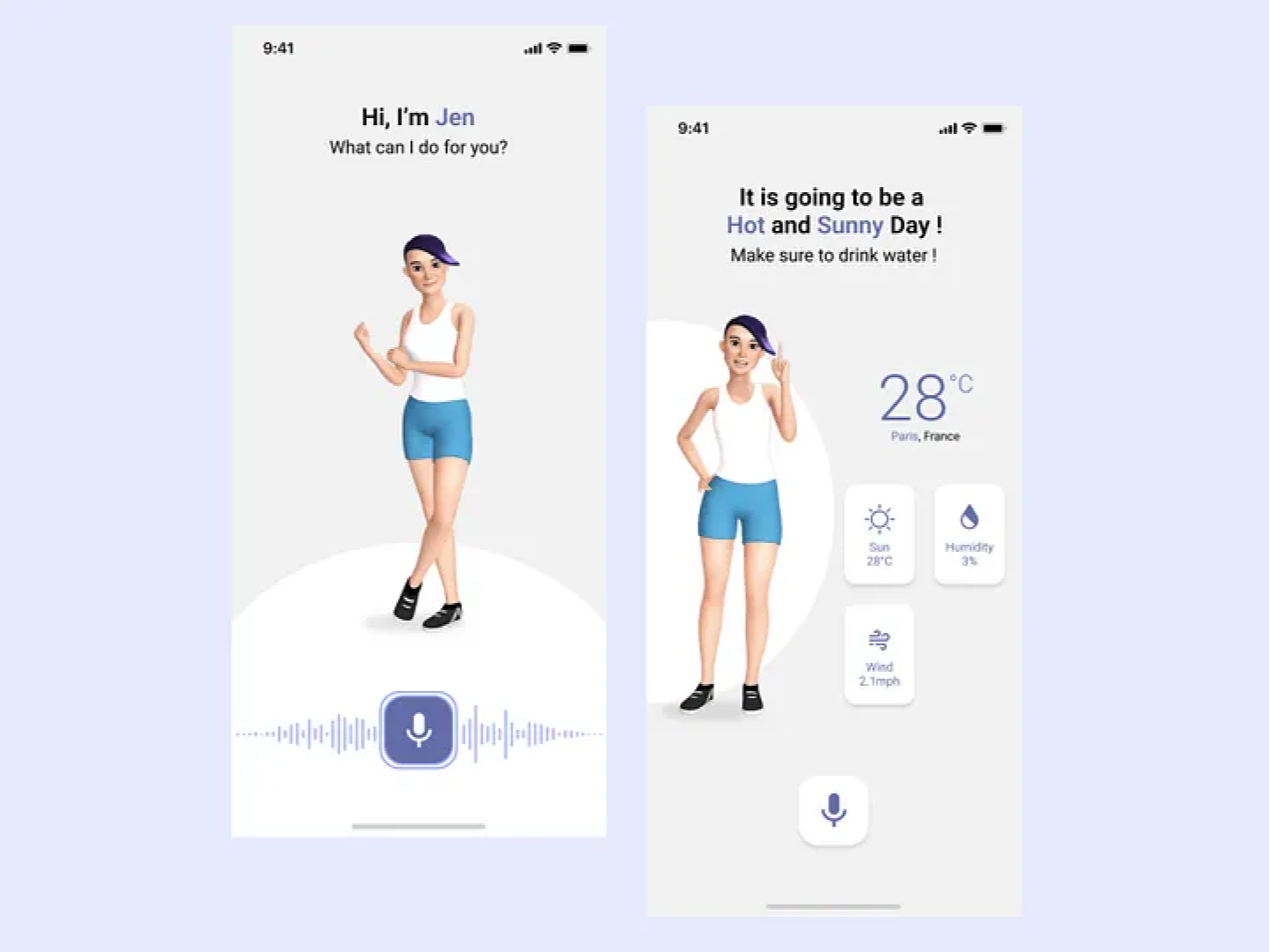At the heart of evolution lies a constant focus on the user, aiming to make interactions effortless, delightful, and accessible. The UI/UX landscape continues to evolve at a rapid pace. Designers and developers are leveraging new technologies and methodologies to create more engaging, intuitive, and immersive user experiences.
To stay ahead in this dynamic field, businesses should consider when to hire UI/UX developer who can bring these cutting-edge trends to life. By understanding these trends, businesses can create interfaces that not only look stunning but also drive user engagement and loyalty. Let’s delve into the current UI/UX design trends, the latest designs being utilized, and the future scope of UX design.
The Latest UI/UX Design Trends
1. Immersive Experiences with AR/VR
Augmented Reality (AR) and Virtual Reality (VR) are transforming user interfaces by providing immersive experiences. From virtual shopping sprees where you can try on clothes in your living room to interactive learning environments that bring history textbooks to life, AR and VR are enhancing user engagement and creating more dynamic interactions.
The AR & VR market in India is projected to reach a revenue of ₹US$789.0m in 2025. It is expected to experience an annual growth rate (CAGR 2025-2029) of 9.74%, resulting in a projected market volume of ₹US$1,256.0m by 2029.
Source: Statista
AR and VR aren’t just flashy additions to the UI/UX toolbox; they represent a fundamental shift in how users interact with digital experiences. Traditional interfaces confine users to two-dimensional screens. AR and VR, however, break these barriers. AR overlays digital elements onto the real world, fostering a sense of seamless integration. VR creates entirely immersive environments, allowing users to step into the digital world. This opens a plethora of possibilities for UI/UX designers. They can craft experiences that are not just informative but truly engaging, allowing users to learn, explore, and interact in entirely new ways.
2. Neumorphism
Neumorphism combines skeuomorphism and flat design, creating soft, extruded plastic-like interfaces. This trend adds depth and a tactile feel to digital elements, making interfaces more visually appealing and interactive.
Example: The new Apple Music app interface uses neumorphism to create a more tactile and engaging user experience.
3. Voice User Interface (VUI)
With the rise of smart speakers and voice assistants, VUI has become a crucial part of UX design. Designing intuitive voice interactions and ensuring seamless voice commands integration are key focus areas in 2025.
4. Minimalistic Design
Minimalism continues to dominate, emphasizing simplicity and clarity. Clean layouts, ample white space, and a focus on essential elements help in creating a distraction-free user experience.
5. Dark Mode
Dark mode is not just a trend but a necessity now, offering users a visually comfortable experience in low-light environments. It also helps in reducing eye strain and saving battery life on OLED screens.
Example: Instagram, Twitter, and many other social media platforms have introduced dark mode options.
6. 3D Graphics and Animations
The use of 3D elements and animations is on the rise, providing a more engaging and interactive user experience. These elements can make a significant impact, especially in e-commerce and gaming applications.
Example: Shopify’s product pages use 3D models to allow users to explore products in detail before purchasing.
7. Micro-Interactions
Micro-interactions are subtle animations that guide users and enhance the overall experience. These include button animations, hover effects, and progress indicators, making interactions more intuitive and enjoyable.
Example: LinkedIn’s animated reactions for posts and messages.
8. Sustainable Design
Sustainability is becoming an integral part of UI/UX design. Designers are focusing on creating digital products that consume less energy and resources, contributing to a greener digital ecosystem.
Latest Designs Used in 2025
Responsive and Adaptive Layouts
- Designs that seamlessly adapt to various screen sizes and orientations are more important than ever. This ensures a consistent experience across all devices, from smartphones to large desktop monitors.
Custom Illustrations and Iconography
- Unique illustrations and icons help in establishing brand identity and creating a memorable user experience. Custom graphics are more engaging than generic stock images.
Asymmetrical Layouts
- Breaking away from traditional grid layouts, asymmetrical designs provide a dynamic and modern look. These layouts add visual interest and guide users’ attention to key elements.
Glassmorphism
- Building on the trend of transparency and blurred backgrounds, glassmorphism adds a modern and sleek aesthetic to interfaces. This design trend is often seen in dashboards and data visualization tools.
Case Studies and Real-World Applications
Several companies have successfully integrated AI in their design processes, leading to improved user engagement and satisfaction. These success stories showcase the transformative power of AI in UI & UX design.
Future Scope of UX Design
The future of UX design is poised to be more user-centric and technologically advanced. As businesses seek to stay ahead of the curve, it’s crucial to hire UX designer who can navigate these emerging trends and innovations. Key areas to watch include:
1. AI and Machine Learning Integration
AI and ML will play a significant role in personalizing user experiences. Predictive analytics and intelligent recommendations will make interfaces more responsive to individual user needs
2. Biometric Interactions
With advancements in biometric technology, interfaces will evolve to include facial recognition, fingerprint scanning, and gesture-based controls, enhancing security and user convenience.
3. Emotional Design
UX design will increasingly focus on creating emotional connections with users. This involves understanding user emotions and designing interfaces that evoke positive feelings and satisfaction.
4. Inclusive and Accessible Design
Ensuring that digital products are accessible to all users, including those with disabilities, will be a primary focus. This involves adhering to accessibility standards and designing for inclusivity.
5. Hyper-Personalization
Future interfaces will leverage user data to offer highly personalized experiences. This could include customized content, tailored recommendations, and interfaces that adapt to user preferences and behaviors.
Types of UX Trends
-
Behavioral UX Trends
Trends focused on understanding and predicting user behavior to design more intuitive interfaces. This includes user journey mapping, user testing, and behavioral analytics.
-
Aesthetic UX Trends
Trends that revolve around the visual and sensory aspects of design, such as color schemes, typography, and visual hierarchy.
-
Technological UX Trends
Trends driven by technological advancements, including AI, AR/VR, and IoT integration.
-
Strategic UX Trends
Trends that involve long-term planning and strategy in UX design, such as user-centric design thinking and agile methodologies.
The UI/UX design trends of 2025 are all about creating next-gen experiences that are immersive, intuitive, and user-centric. As technology continues to evolve, so will the approaches to designing user interfaces and experiences. By staying updated with the latest trends and anticipating future developments, designers can create impactful and engaging digital products that meet the ever-changing needs and expectations of users.
Let’s Build Digital Excellence Together











